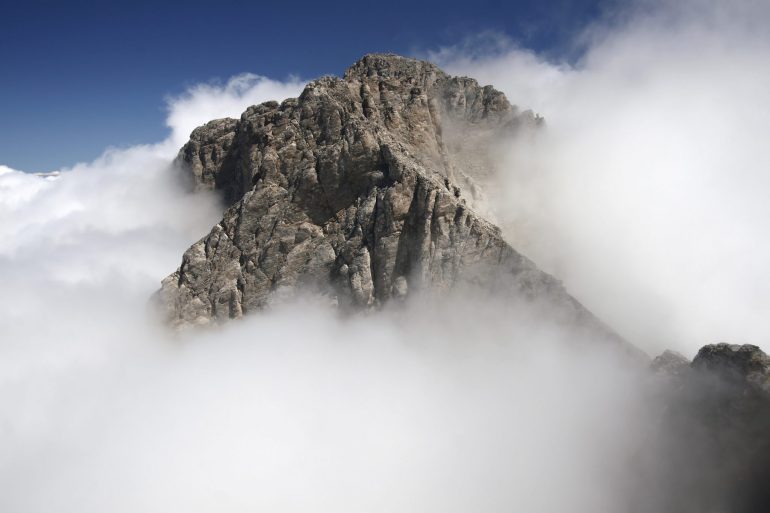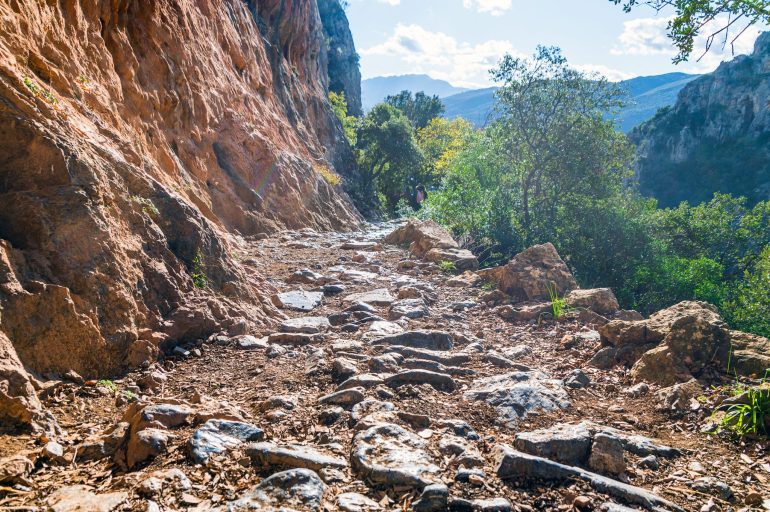Greece, renowned as the cradle of civilization and the southernmost country in Europe, enchants visitors with its rich heritage, stunning beaches, and abundant islands. But beyond the allure of its coastal regions, the nation’s dramatic mountainous terrain, covering approximately eighty percent of its land, beckons tourists and nature enthusiasts alike. In a landscape blessed with intricate biodiversity and geology, each mountain range in Greece tells a unique tale, deeply intertwined with ancient myths and legends.
Undoubtedly the most significant massif is the Pindus or Píndos range. Running through the core of the mainland, it’s known as the spine or backbone of the country. And yet, beyond this are myriad other ranges, each with their own unique character. Join us on a thrilling journey as we navigate these rugged Greek ranges, to unveil the country’s highest mountains, from the iconic Mount Olympus to the majestic Mount Ida, each peak holding a distinct character, steeped in mythology, history, and breathtaking natural beauty. So, with such a wealth of peaks within its borders, the question is, what are the highest mountains in Greece? Get ready to “Greek out” as we explore exactly that.
Mount Olympus

Mytikas - the highest top of Mount Olympus surrounded by clouds. (Credit: dbencek via Getty Images)
Mount Olympus doesn’t just tower over other mountains; it also lords over ancient Greek tales. As the myth goes, it was here that the pantheon of Greek gods, led by Zeus, held celestial court. As for mere mortals, this beacon among the tallest mountains in Greece presents the challenge of scaling its crowning glory: Mytikas. Soaring approximately 9,573 feet above sea level, Mytikas is not just a physical high point, but also a symbol of Greece’s lofty place in nature and narrative. Situated amidst the limestone wonders of the Olympus range, this towering peak is both a National Park and a UNESCO Biosphere Reserve. Nature, it seems, loves a dramatic setting.
Mount Smolikas

Mount Smolikas with a beautiful lake at sunset in the foreground at sunset. (Credit: Ioannis Nestoras via Getty Images)
Pindus might be the backbone, but Smolikas is its vertiginous vertebra, standing second only to Olympus in Greece’s highest mountains list. This mammoth peak reaches an altitude of nearly 8,652 feet, its base a pastoral painting of forests, meadows, and the occasional sheep, while its higher reaches embrace barren beauty. And for those with a penchant for myths, the dragon’s lake, Drakolimni, nestled at about 7,200 feet, whispers tales of its mythical inhabitants.
Kaimakchalan

Mountains in Greece. (Credit: Posnov via Getty Images)
Kaimakchalan, the highest peak of the Voras Mountains at around 8,271 feet, stands as the third in the rankings of Greece’s highest mountains. Its summit touches both Greece and North Macedonia, being the fifth highest in the latter.
Mount Gramos

Pindos mountain range, Greece. (Credit: Maya Karkalicheva via Getty Images)
Gramos offers more than just tall tales; it’s a chapter in history, both natural and human. This member of the Pindus clan binds Greece to Albania and has seen traders, travellers, and tumults. But, nature prevails, making it a haven for creatures rare and regal, from elusive antelopes to vigilant vultures. Indeed, Gramos is among the biggest mountains of Greece in more ways than one.
Mount Ida

Road to Mount Ida, Greece. (Credit: Posnov via Getty Images)
The first of the highest mountains in Greece to stray beyond the mainland, Mount Ida is located in the Rethymno regional unit on the island of Crete. With its highest peak, called Timios Stavrós, rising to around 8,058 feet above sea level, it’s an impressive karstic formation within a UNESCO Geopark. As well as being the highest point on the island, it’s also the Greek mountain with the highest topographic prominence or independence. Also known as Psiloritis, the mountain was a sacred site in ancient mythology, and it was said Zeus himself was born in a cave on its slopes.
The Biggest Mountains of Greece

A footpath near Lousios river in the Peloponnese, Greece (Credit: George Pachantouris via Getty Images)
From the iconic Olympus to the revered Ida, the tallest mountains in Greece offer not just breathtaking views and diverse ecosystems, but also a rich tapestry of mythology and history. Each peak holds its own unique charm, contributing to the diverse and beautiful landscape of Greece.











